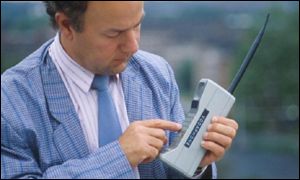Hey guys, so I have two quick question maybe someone can help me out since i am crunched for time and don't have enough to experiment .
I know how to shoot a basic scene with dialogue. Now For example if two people are talking, you shoot the scene all the way through with the camera focused on one person, then you cut and change camera angles and shoot the scene again but this time the camera is focused on the other person while they say their lines.
Question 1.My question is, do I keep the boom mic above both of them or just keep it closer to the person who is being filmed at the current moment?
Question #2 I have plenty of phone conversations in this flick, Now I know there are a number of ways to go about doing this but the way I am going to do it is to switch scenes every time the other person talks on the phone. In order to shoot this the actor will say his lines while someone off camera reads the lines of the other person. I am concerned that the audio of the person out of frame is going to get mixed in the take, is there a way to edit it out? Any other idea's for phone conversations would be appreciated
I mean when ever I watch a movie making documentary I usually always see/hear the director saying stuff to the actors while they are filming how do they edit that out?
I know how to shoot a basic scene with dialogue. Now For example if two people are talking, you shoot the scene all the way through with the camera focused on one person, then you cut and change camera angles and shoot the scene again but this time the camera is focused on the other person while they say their lines.
Question 1.My question is, do I keep the boom mic above both of them or just keep it closer to the person who is being filmed at the current moment?
Question #2 I have plenty of phone conversations in this flick, Now I know there are a number of ways to go about doing this but the way I am going to do it is to switch scenes every time the other person talks on the phone. In order to shoot this the actor will say his lines while someone off camera reads the lines of the other person. I am concerned that the audio of the person out of frame is going to get mixed in the take, is there a way to edit it out? Any other idea's for phone conversations would be appreciated
I mean when ever I watch a movie making documentary I usually always see/hear the director saying stuff to the actors while they are filming how do they edit that out?



 ... Just don't overlap the lines if you're doing it that way. That way you leave room to edit.
... Just don't overlap the lines if you're doing it that way. That way you leave room to edit.


